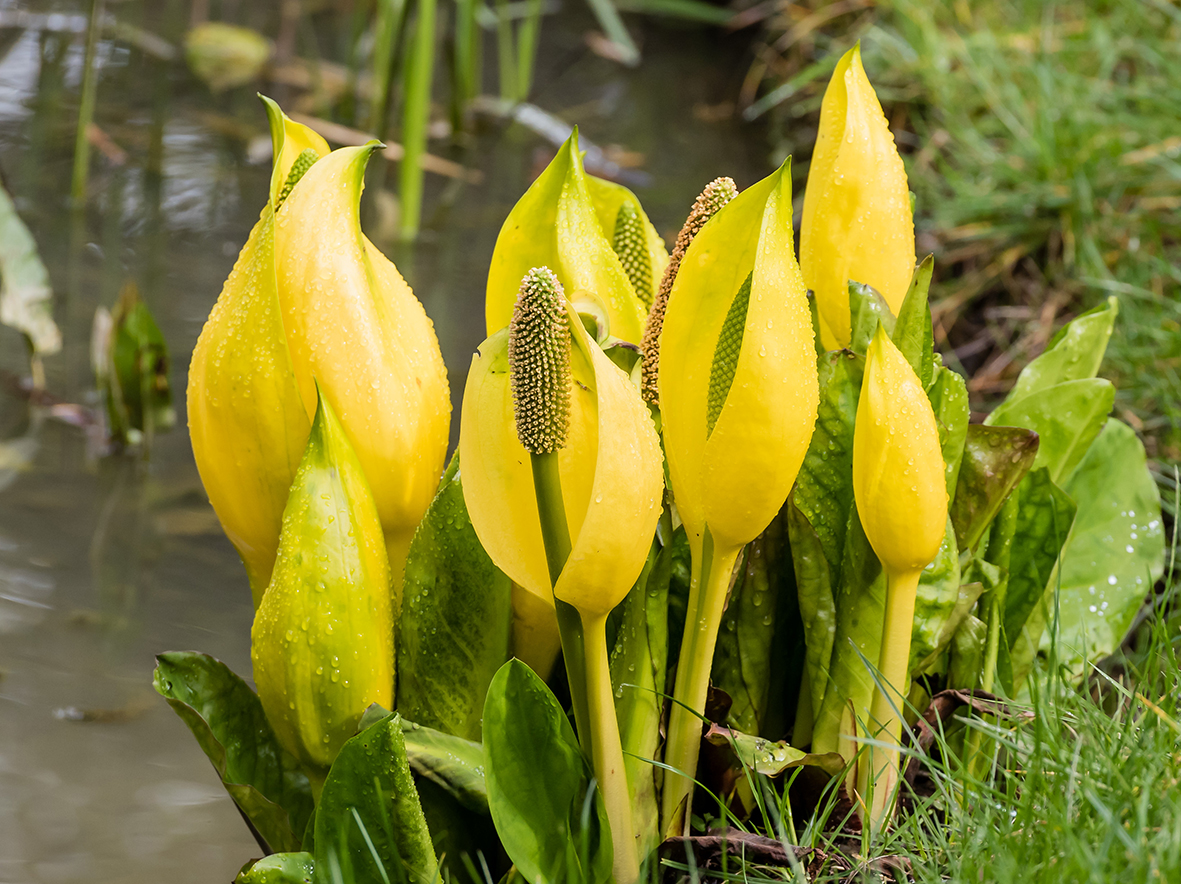IDENTIFICATION
Did you spot something that you think might be an invasive plant? Use our FREE identification service to quickly find out.



American skunk cabbage can be treated with a suitable aquatic herbicide or manually removed by hand-pulling. With large scale colonies excavation may be required in order to completely remove any remaining rhizome (root) systems. As the plant waste is deemed as special ‘controlled waste’ it will need to be taken to a suitably licensed landfill.
To find out the best way to remove American skunk cabbage and the best time of year to have treatment or excavation carried out get in touch.
Listed under The EU regulation on Invasive Alien Species, once this highly invasive plant is established it forms dense clumps that can make access for treatment or removal difficult. It spreads via rhizome and seed dispersal. Seeds can be carried by birds and mammals or water which means new colonies can break out along the water course.

SCIENTIFIC NAME: Lysichiton americanus
ORIGIN: North America
American skunk cabbage was originally introduced as an ornamental bog plant, favoured for it’s vibrant colour. Predominantly recognised for its large leathery leaves, bright yellow flowers and foul smell. Its name comes from the putrid odour the flowers produce in spring. Prolific in swamp forests and associated wetlands. When not in flower, it may be confused with the native Water plantain (Alisma plantago) which is fairly common in slow flowing habitats.
Thrives in semi-aquatic and aquatic habitats such as swamps, damp woodlands, along streams and riverbanks, lake sides, ponds, boggy and other wet areas. As long as the site is wet, it has no specific soil requirements so it can grow in shade or full sunlight.
No social impacts are reported, other than the costs related to control or eradication measures. However, it will out-compete native species which has an effect on the reduction in biodiversity if established in vulnerable habitats with no control measures in place.
American skunk cabbage presents no physical danger to either humans or animals.